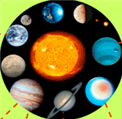Missions & Projects
Alphabetical
By Last Name:
Displaying records 1 to 14 of 14.
Show:
Aeronomy of Ice in the Mesosphere (AIM)
The AIM satellite mission is designed to explore Polar Mesospheric Clouds (PMCs), also called noctilucent clouds, to find out why they form and why they are changing.
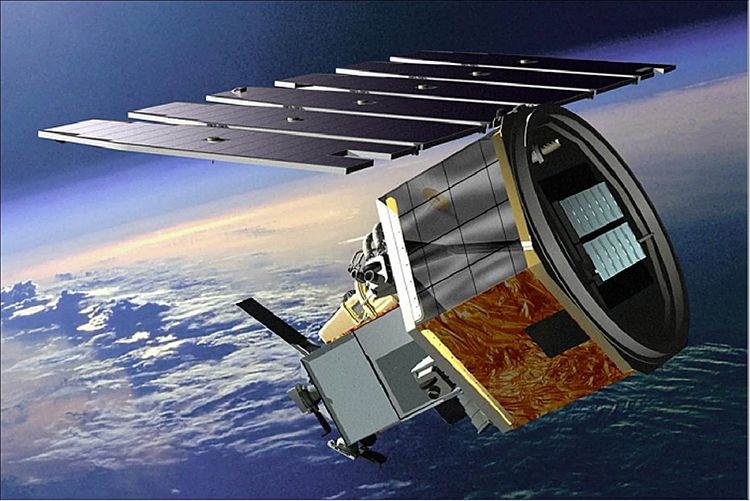
C/NOFS Coupled Ion Neutral Dynamic Investigation (CINDI)
CINDI involves two instruments on the C/NOFS satellite that measure the concentration and kinetic energy of the ions and neutral particles in space as the satellite passes through them. This information will be used in building models to understand the various structures in the ionosphere, such as plasma depletions and associated turbulence in the nightside, low-latitude ionosphere. These structures can interfere with radio signals between Earth and spacecraft in orbit, thus causing errors in tracking and loss of communication.
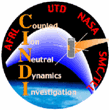
C/NOFS Vector Electric Field Instrument (VEFI)
VEFI measures direct current (DC) electric fields, which cause the bulk plasma motion that drives the ionospheric plasma to be unstable. Additionally, it measures the quasi-DC electric fields within the plasma density depletions to reveal the motions of the depletions relative to the background ionosphere. VEFI also measures the vector AC electric field, which characterizes the ionospheric disturbances associated with spread-F irregularities.
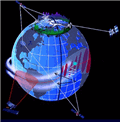
Global-scale Observations of the Limb and Disk (GOLD)
The Global-scale Observations of the Limb and Disk (GOLD) mission of opportunity is an imaging instrument that is on a commercial communications satellite in geostationary orbit to image the Earth's thermosphere and ionosphere. GOLD was launched in January 2018.
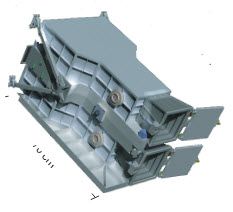
Ionospheric Connection Explorer (ICON)
ICON will explore the boundary between Earth and space – the ionosphere – to understand the physical connection between our world and the immediate space environment around us.
Living With a Star Program (LWS)
The Living With a Star program emphasizes the science necessary to improve our understanding of how and why the sun varies; how Earth and the solar system respond; and how the variability and response affect humanity in space and on Earth. One of the program's key goals is to improve our ability to forecast geomagnetic storms and other forms of stormy "space weather." Such events can interrupt or damage satellite communications systems, trigger surges in power grid systems, and increase radiation hazards to orbiting astronauts and spacecraft.
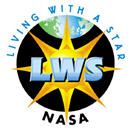
Magnetospheric Multiscale Satellites (MMS)
MMS consists of four identical spacecraft that orbit around Earth through the dynamic magnetic system surrounding our planet to study a little-understood phenomenon called magnetic reconnection. Magnetic reconnection is a fundamental process that happens in space, which powers a wide variety of events, from giant explosions on the sun to green-blue auroras shimmering in the night sky.
Key Staff
- Science Co-Investigator: Thomas Moore
- Deputy Project Scientist: Mark Adrian
- Deputy Project Scientist: Guan Le
Instruments
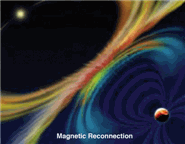
Polar, Wind, Geotail (PWG)
Polar, Wind and Geotail program is a part of the International Solar-Terrestrial Physics (ISTP) Science initiative, combining resources and scientific communities to obtain coordinated, simultaneous investigations of the Sun-Earth space environment over an extended period of time.
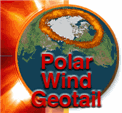
Sounding Rockets
For over 40 years the Sounding Rocket Program has provided critical scientific, technical, and educational contributions to the nation's space program and is one of the most robust, versatile, and cost-effective flight programs at NASA.
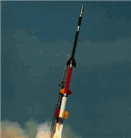
Thermosphere Ionosphere Mesosphere Energetics and Dynamics (TIMED)
The Thermosphere Ionosphere Mesosphere Energetics and Dynamics (TIMED) mission is studying the influences of the sun and humans on the least explored and understood region of Earth's atmosphere: the Mesosphere and Lower Thermosphere/ Ionosphere (MLTI). The MLTI region is where the sun's energy enters Earth's environment for the first time. The TIMED spacecraft focuses on a portion of the MLTI region located at an altitude of approximately 40-110 miles (60-180 kilometers).
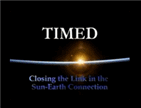
Time History of Events and Macroscale Interactions during Substorms (THEMIS)
The Time History of Events and Macroscale Interactions during Substorms (THEMIS) mission will help scientists answer questions about changes in the aurora, also known as the Northern or Southern Lights. Specifically, THEMIS investigates the nature of the events, called auroral substorms, that abruptly and explosively release solar wind energy stored within Earth's magnetotail. The THEMIS mission employs five identical spacecraft in carefully chosen orbits whose apogees line up once every 4 days over a dedicated array of ground observatories located in Canada and the northern United States.

Van Allen Probes (formerly RBSP)
Launched in August 2012, the Van Allen Probes (formerly Radiation Belt Storm Probes, and part of NASA's Living With a Star program), will provide unprecedented insight into the physical dynamics of the radiation belts and give scientists the data they need to make predictions of changes in this critical region of space.
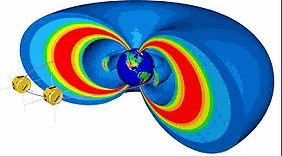
Virtual Ionospheric Thermospheric Mesospheric Observatory (VITMO)
The Virtual Observatory for the Ionosphere Thermosphere Mesosphere Community (VITMO) is being implemented at JHU/APL and provides data covering the Ionosphere Thermosphere Mesosphere (ITM).

Virtual Wave Observatory (VWO)
The goal of the Virtual Wave Observatory (VWO) is to make Heliophysics plasma wave and radiation data search-able, understandable and usable by the Heliophysics community.
